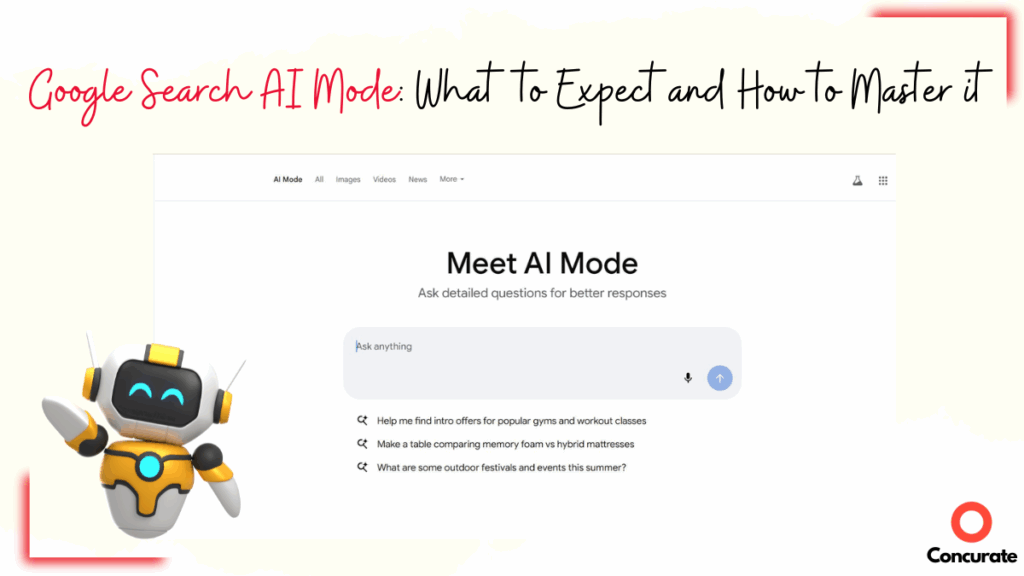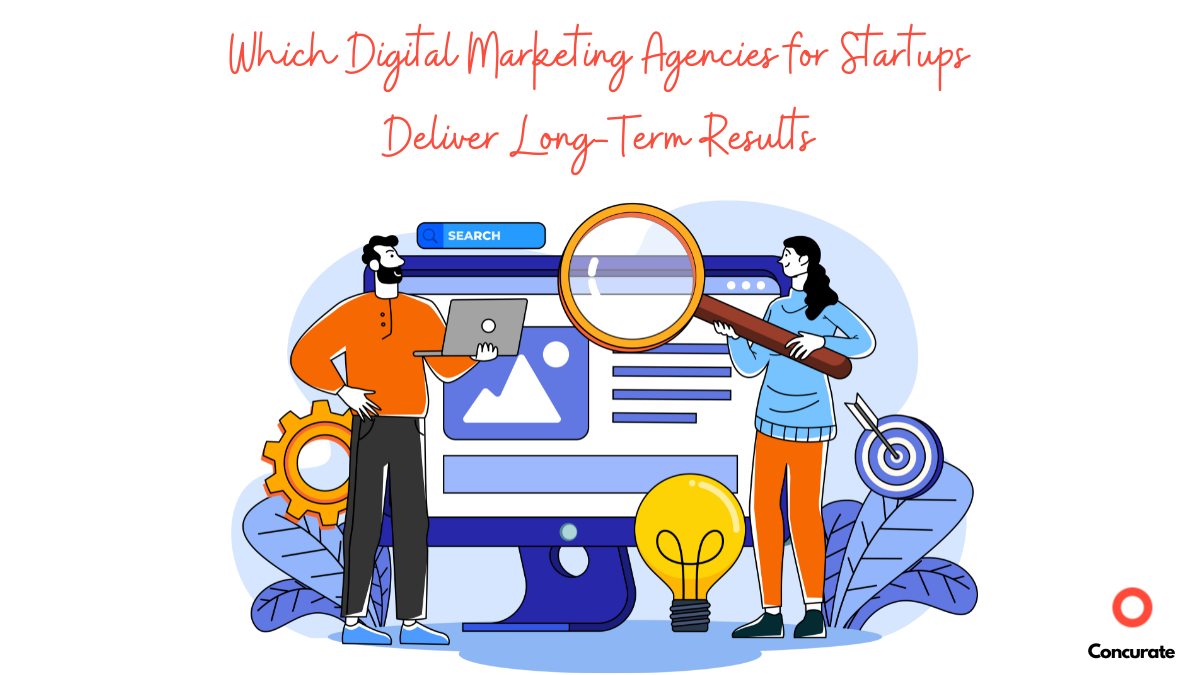Google AI Mode Is Here—What It Means for SaaS SEO and Content Strategy
| TL;DR: Google AI Mode is changing how SaaS content gets found. Traditional SEO won’t cut it anymore. To stay visible, you’ll need stronger branding, higher-quality content, and wide distribution through product comparisons and third-party listicles. This guide breaks down exactly how to adapt. |
Recently, in the latest edition of Google I/O 2025, Sundar Pichai introduced a major shift: AI Mode in Search.
Think of it as Google Search reimagined with ChatGPT-like answers, follow-up prompts, and fewer traditional blue links. Users now get summaries, not search results—and for SaaS marketers, that changes everything.
Already, Google’s AI Overviews—the earlier version launched in May 2024—reduced click-through rates by 34%, even as total search queries increased by 10%. For many SaaS brands, organic traffic is dropping, and content that once ranked is now buried or bypassed entirely.
No surprise, when we speak with SaaS CMOs, we hear the same concerns: Will my product still show up? How do we win in AI search? Do we need to rethink SEO from scratch?
This article clears the noise. We’ll explain what Google AI Mode actually offers, what changes it brings to SaaS SEO and content strategy, and—more importantly—how to stay visible, discoverable, and competitive as search evolves.
(Spoiler: You don’t need to start from zero, but you do need to adapt fast.)
Google AI Mode Capabilities Making Search More Intelligent
Google’s AI Mode represents their most advanced search experience, powered by Gemini 2.5. Therefore, before we move on to the nitty-gritty of AI mode and its effects, it makes sense to discuss its capabilities first, right?
Based on the publicly available information, Google AI mode mimics a combination of a search engine and an AI agent. Its most notable capabilities are:
Advanced Query Processing with “Fan-Out” Technique
Instead of processing users’ single queries, AI Mode breaks them down into multiple subtopics and runs hundreds of simultaneous searches. This technique allows it to explore related angles and cross-reference information from across the web, discovering highly relevant content that might otherwise be missed.
The system considers users’ questions from multiple perspectives simultaneously and surfaces comprehensive information that traditional search engines cannot find.
For example, searching “best project management software for a mobile app development company with under 50 employees” triggers simultaneous searches for team collaboration tools, task-tracking features, pricing comparisons, user reviews, and integration capabilities.
Deep Search for Comprehensive Research
When users need in-depth answers, AI Mode activates Deep Search, combining it with its fan-out technique to issue hundreds of queries at once. It analyzes scattered information sources—blogs, documentation, reviews, and comparison sites—and generates fully-cited, synthesized responses in minutes.
Say a Head of Engineering searches,
“Should we build our own analytics stack or use a SaaS BI tool like Looker or Metabase?”
AI Mode breaks this into sub-questions: cost comparison, time to implement, security considerations, team skill requirements, and scalability.
The output surfaces a concise pros and cons list, often with links or follow-up questions to explore deeper. Instead of piecing together answers from five tabs, decision-makers get a high-level, contextual overview in one go.
Live Visual Search Capabilities
Search Live enables real-time conversations based on what users see through their phone cameras. It’s primarily designed for consumer shopping experiences—like pointing your camera at a piece of furniture or apparel and asking for alternatives, prices, reviews, or compatibility.
But edge cases exist for SaaS, too.
For instance, a buyer attending a tech event or conference could point their phone at a demo screen, sales slide, or product comparison chart. AI Mode can then:
- Explain what the software does
- Pull up alternatives in the same category
- Show recent reviews or pricing tiers
- Suggest follow-up questions like “Is this SOC 2 compliant?” or “What’s the G2 rating?”
It acts as a lightweight AI product analyst, offering just-in-time insights based on what the user is seeing, even if it’s not typed into the search bar.
Agentic Task Completion
AI Mode can take over specific real-world tasks like booking restaurant reservations, purchasing event tickets, or scheduling salon appointments. It searches across multiple platforms, compares options in real time, and auto-fills forms, while giving the user final control.
This capability is primarily geared toward consumer transactions, with integrations across platforms like Ticketmaster, StubHub, Resy, and Vagaro.
For SaaS marketers, this feature isn’t directly impactful yet.
That said, there are potential edge cases. For example, a user searching for “register for [Product] live demo” might, in the future, be able to complete the sign-up via AI Mode without ever landing on your site. But as of now, agentic task completion doesn’t extend to B2B workflows like demo scheduling or lead qualification.
Bottom line: No immediate SEO or conversion impact for SaaS, but worth keeping an eye on.
Personalized Shopping Integration
Google AI Mode enhances the consumer shopping journey by integrating with the Google Shopping Graph. It enables features like virtual try-ons, agentic checkout, and AI-guided purchase decisions. For instance, users can upload a photo to try on billions of apparel items virtually, then complete the purchase seamlessly through Google Pay.
That said, this capability is built squarely for consumer retail use cases, not for software buying journeys.
At this point, SaaS marketers don’t need to worry about this feature affecting how buyers discover or purchase B2B software. Complex SaaS buying decisions, especially those involving multiple stakeholders, demos, or compliance checks, remain outside the scope of AI Mode’s shopping integrations for now.
Personal Context Integration
AI Mode tailors responses using a user’s search history and, with permission, data from Gmail and other Google services. But for SaaS, this has limited relevance—B2B searches are often done in incognito mode, decisions are team-based, and many buyers don’t use Gmail. SaaS marketers don’t need to factor this in, for now.
Custom Data Visualization
For complex, data-heavy queries, AI Mode can generate interactive visualizations, turning messy web results into clear, tailored charts. Like if a buyer searches:
“Compare Genesys, NICE CXone, and Enghouse by market share, geographical presence, and compliance certifications in 2025”
Google AI Mode uses its Deep Search capability to pull structured information from analyst reports, vendor documentation, and comparison blogs—then displays a side-by-side table or summary. Instead of hunting through five different vendor pages, the buyer sees the key comparison in one view.
This makes competitive research and vendor evaluation significantly faster—especially for high-consideration SaaS tools.
While not every capability applies equally to SaaS, the shift in search behavior is clear. What matters now is knowing where to focus so your brand stays visible as AI Mode becomes the default.
How SaaS Marketers Can Thrive in Google AI Mode Search Environment
Clearly, Google AI Mode search is powerful. Previously, getting to the top of the search results page guaranteed that your content would get the attention of all the visitors. Now, unless you secure a place in the Google AI mode results, you will be behind.
But what does it take to appear in this new search mode?
To find the answer, we decided to roll up our sleeves and pull all-nighters to look at currently available research and conduct our own experiments. Here is what we found:
Write Comprehensive Content for Detailed Buyer Queries
To appear in Google AI Mode, your content needs to reflect every possible detail a potential buyer might want to know about your SaaS product. That includes details of your champion users—their industry, company size, team structure, number of employees—along with use cases, pricing, customer support coverage, integrations, deployment models, and more. Your content should reflect every single factor that could influence a buying decision.
And this information shouldn’t live only on your company website. It needs to exist across the web—in product reviews, comparison blogs, Wikipedia entries, analyst roundups, customer stories, and other third-party sources. These are the places Google AI Mode pulls from.
This behavior aligns with two of Google AI Mode’s core capabilities:
- Fan-Out Query Processing: AI Mode breaks down a broad query into multiple granular sub-intents (e.g., industry relevance, integration compatibility, buyer role).
- Deep Search: It pulls from a wide range of sources to stitch together the most contextually accurate response—favoring content that mirrors real-world buying considerations.
For instance, when we asked Google AI Mode:
“What’s the best CPQ software that lets SaaS companies offer flexible payment terms to customers but still get paid upfront?”
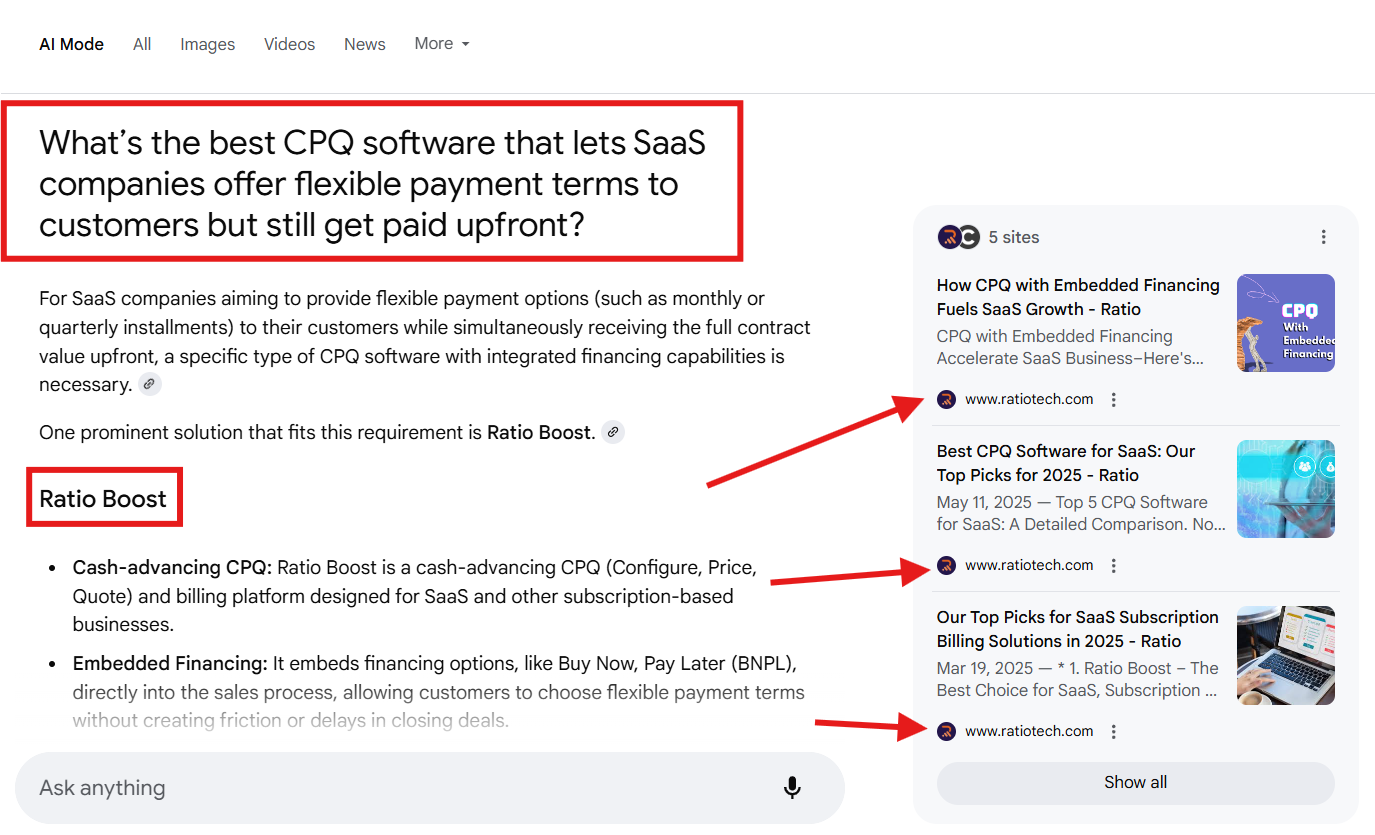
It featured Ratio Boost as the top solution—citing multiple content pieces published on ratiotech.com. What’s notable is that these results didn’t come from top-ranking pages on traditional search. They came from in-depth, context-rich blogs we have done for our client Ratio—covering everything from embedded financing to CPQ workflows tailored for SaaS. These articles explained not just what Ratio Boost does, but why it’s relevant for SaaS CFOs and RevOps leaders managing flexible billing and upfront cash needs.
Takeaway: If your blog reflects the structure, language, and depth of how your buyers phrase real questions—Google AI Mode can find and surface it, even if it’s not ranking in the top 10.
Focus on Content for Ready-to-Buy Prospects
When a potential buyer is actively evaluating tools, they don’t search for vague information, they ask specific, high-intent questions. That’s exactly the kind of query Google AI Mode is designed to handle. If your content answers those questions clearly and comprehensively, it has a strong chance of being featured.
A great example of this in action is a blog we created for our client Ratio, comparing CPQ software options for SaaS companies. The article didn’t just list tools; it broke them down by use case, pricing complexity, and suitability for different company types.
When someone searches “What is the best CPQ software for SaaS companies in 2025,” Google AI Mode highlights Ratio Boost right at the top, pulling directly from that blog—even though the site doesn’t rank at the top of traditional search results.
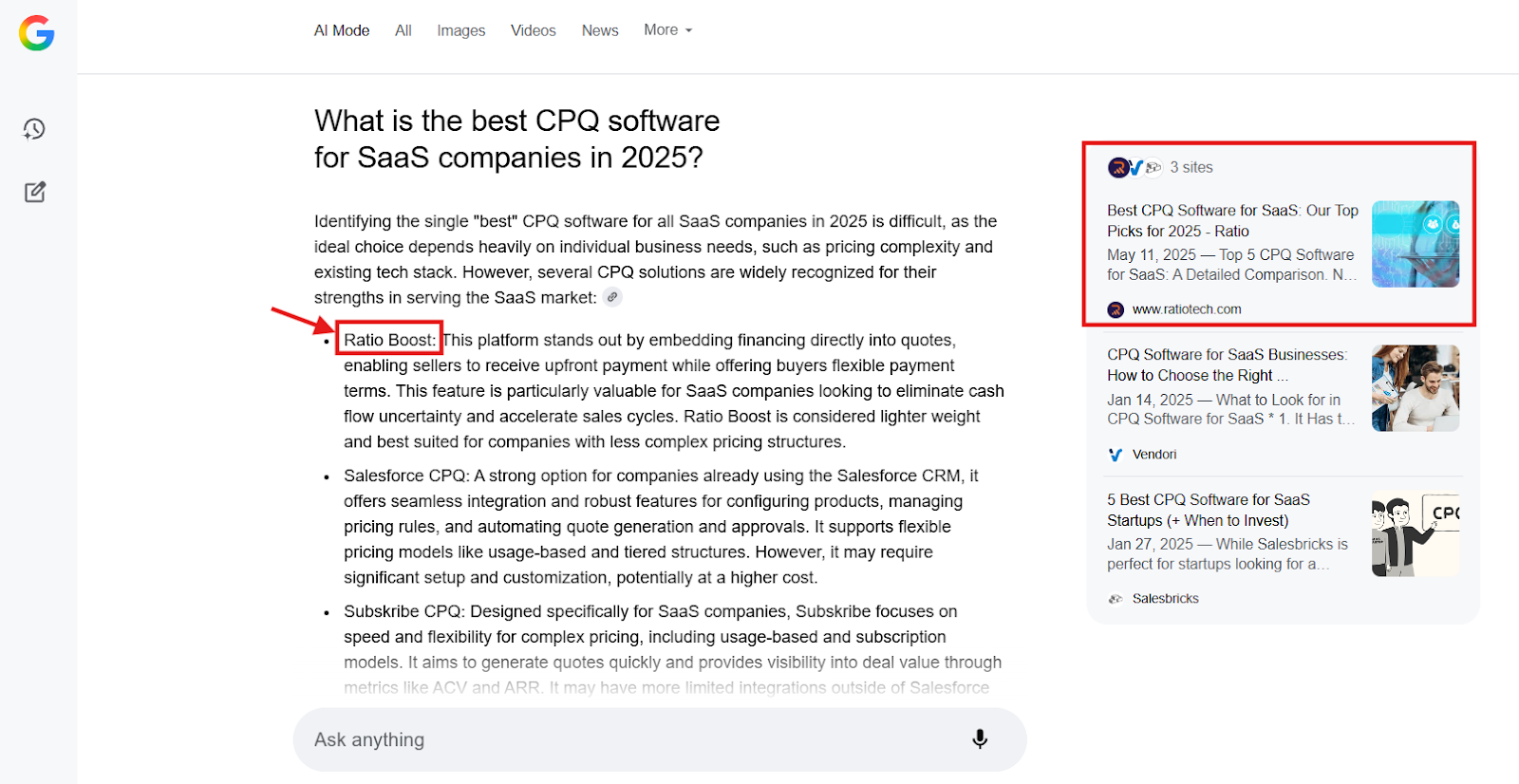
That happens because of how AI Mode works:
- It uses Fan-Out Query Processing to break the question into subtopics like team size, integration requirements, or payment flexibility.
- It applies Deep Search to find sources that explain those factors in context.
- And it favors structured comparisons, which are easier to parse and summarize.
To increase your chances of being featured in AI Mode, your content should be built the same way. That means:
- Answering specific questions buyers actually ask when they’re close to deciding
- Comparing tools or approaches based on real evaluation criteria (e.g., pricing models, onboarding effort, integrations)
- Using a clear, scannable structure with bullet points, subheadings, or short summaries
- Providing context that helps the AI “understand” when and for whom your product is the right fit
Content like this doesn’t just help you win trust with buyers—it positions you to be discovered right when they’re ready to act.
Invest in Your Brand Building Efforts
We ran this query in Google AI Mode: “We need a new call center set up. Looking for CCaaS providers with on-premise facility”
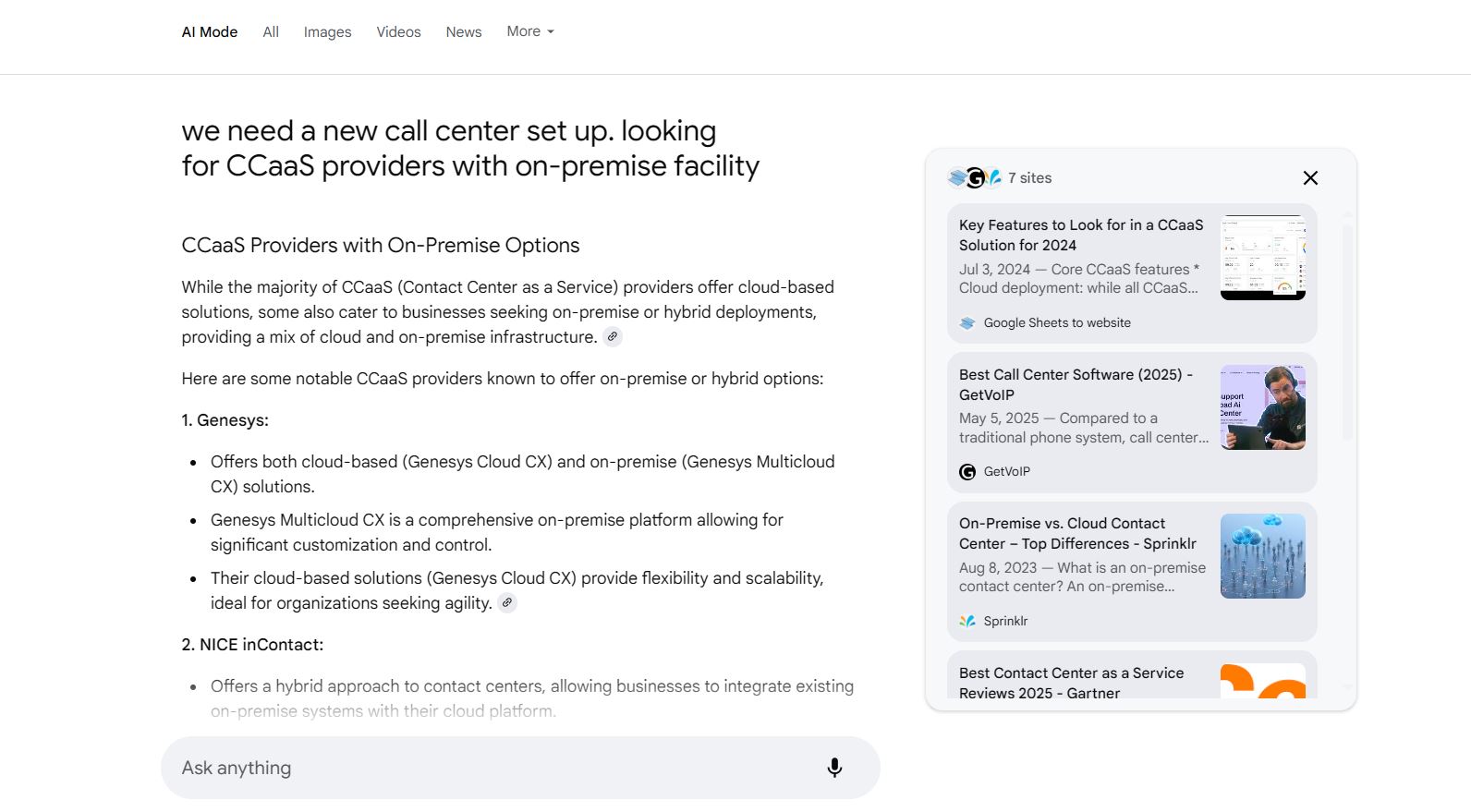
The response prominently recommended Genesys and NICE—but didn’t link to their websites. Instead, it pulled from third-party review platforms and neutral sources. This reflects a fundamental shift in how AI search works.
Google AI Mode doesn’t just surface the most optimized site. It surfaces the most trusted answer.
That trust is built from what the AI sees across the web. If your SaaS brand is consistently mentioned in product roundups, industry blogs, partner sites, and customer reviews, it sends a strong trust signal. The system uses its Deep Search and fan-out query capabilities to cross-reference across sources and validate the recommendation before presenting it.
In fact, Ahrefs analyzed hundreds of AI search responses and found a pattern: ‘Brands with higher numbers of neutral web mentions were more likely to appear in AI-generated search results.’
That’s why brand visibility outside your own site matters more than ever.
So how do you build those mentions? Through strategic content.
When you publish thought leadership on third-party sites, contribute to comparison blogs, or get listed in curated “best tools” articles, you’re building a presence that AI can verify. Even creating high-quality content on your own site can spark references—especially if it gets shared or cited by others.
Optimize Your Home Pages for the Final Click
Let’s say your SaaS brand gets mentioned in a Google AI Mode response but not hyperlinked. That’s not uncommon. Google AI Mode often cites brand names, not URLs. The user then searches the brand separately and lands unsurprisingly on your homepage.
We’ve seen this play out in real traffic data: Companies featured in AI responses often experience a noticeable lift in homepage visits, while internal blog pages or landing pages see less of that direct benefit.
That’s why homepage optimization is a crucial last mile strategy.
If AI search is pointing people to you indirectly, your homepage becomes the first real impression. It needs to clearly communicate:
- What your product does
- Who it’s for
- What sets it apart
- And most importantly, what action the visitor should take
Strong headlines, emphasis on benefits, clean messaging, fast load times, and strategic CTAs can turn passive visitors into pipeline.
⚠️ But here’s the caveat: this advice only applies if your brand is already surfacing in Google AI Mode. If you’re not there yet, prioritize the other strategies first like creating high-context content and earning third-party mentions.
Once you start showing up, your homepage needs to do the rest of the work.
With search evolving fast, it helps to have a partner who’s keeping up and getting real results. That’s exactly what we’re doing at Concurate—staying on top of what’s new without losing sight of what works.
Concurate: Your Trusted B2B SaaS Content Partner for the AI Search Era
At Concurate, we are a competent and reliable content partner for our SaaS clients. We understand that, with the AI race at full swing, existing rules of content marketing and SaaS SEO are changing.
That’s why we decided to head into the matter and find ways to navigate through these changes. We have already talked about how to rank on AI overviews, optimize your website for LLM search appearances to boost your AI search visibility, and even ranked our clients on AI searches.
We don’t just create content—we build revenue-focused assets that generate leads, drive signups, and get discovered where it matters most. If you’re looking for a strategic content partner who understands the new search landscape, book a call with us.
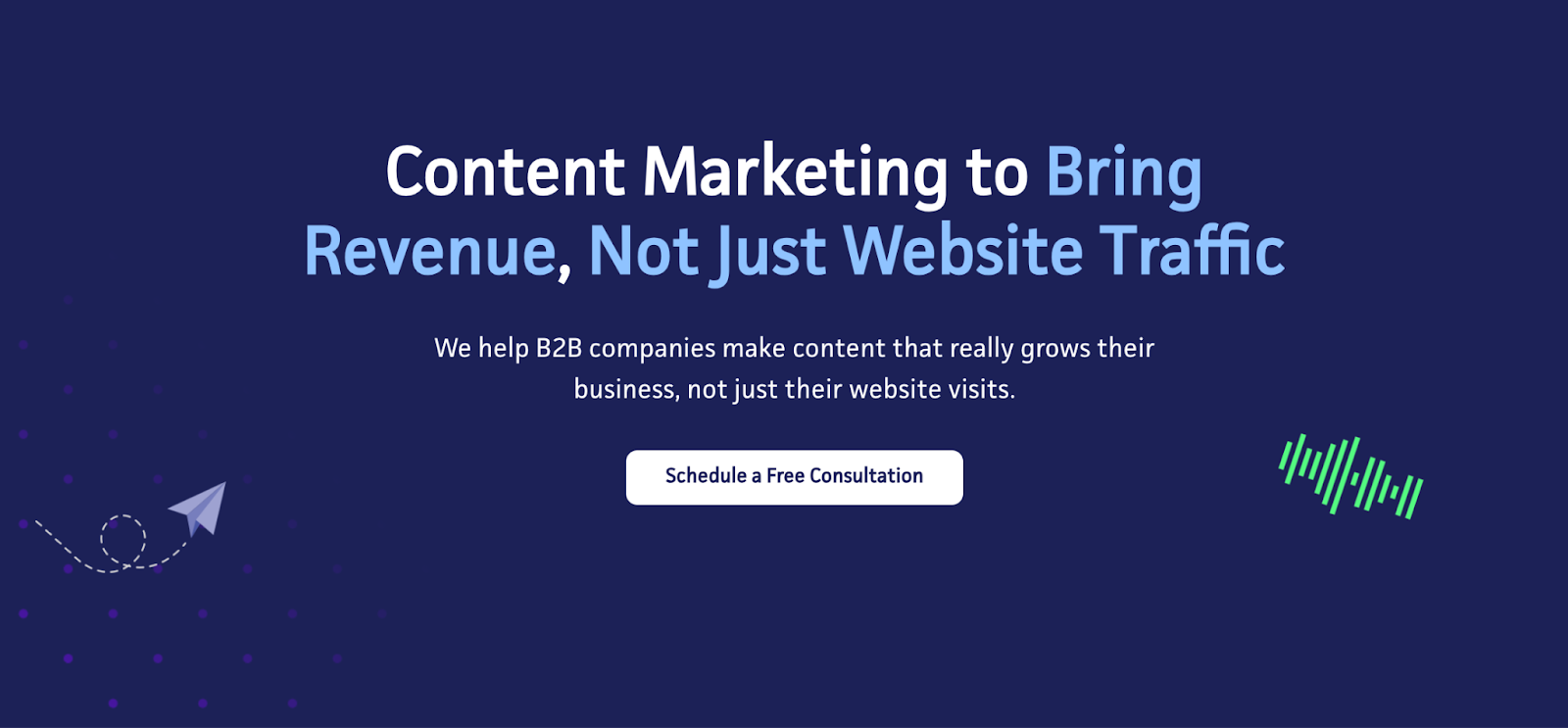
Or, if you want to learn more about our work, experiments, and thoughts on effective B2B SaaS content marketing, consider subscribing to our newsletter.
FAQs
Google AI Mode changes how content is discovered. Instead of focusing on backlinks and keyword density, it favors context-rich answers, brand authority, and semantic relevance. For SaaS companies, this means rethinking SEO to prioritize content that answers high-context buyer queries, showcases trust signals, and reflects a clear ICP focus.
Traditional SEO is about ranking in blue links. Google AI Mode SEO is about getting cited or summarized in AI-generated answers, even if your blog isn’t in the top 10 results. It’s less about exact keywords and more about intent, clarity, and credibility.
Google AI Mode pulls from a wider search index, incorporates brand familiarity, and often summarizes multiple sources without citation. Perplexity, by contrast, is more transparent; it cites exact sources and favors directly answer-focused content. For SaaS brands, appearing in Perplexity is more controllable, but ranking in Google AI Mode is more impactful due to broader reach.
Not directly. As of now, Google Search Console doesn’t isolate impressions or clicks from AI Mode. However, you may notice a spike in homepage traffic, branded queries, or reduced click-through on blog pages—indirect indicators that AI Mode is referencing your content.
Not quite. AI Overviews are integrated into traditional search results, offering brief AI-generated summaries. Google AI Mode, on the other hand, is a standalone conversational search experience—more dynamic, exploratory, and personalized, much like Perplexity.
As of mid-2025, Google AI Mode is now available in India via Search Labs as part of Google’s experimental features.


